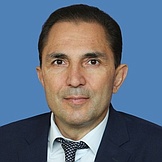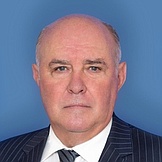Regional flags and emblems


PROFILE
Established 2 January 1947
Capital Yuzhno-Sakhalinsk
The Sakhalin Region is part of the Far Eastern Federal District
Area 87,100 sq km
Population 456 800 (2025)
Ethnic groups
(2020 National Census, %)
Russian – 91,20
Korean – 3,71
Other – 5,09
Administrative divisions (2024)
City districts – 18
Geography and climate
The Sakhalin Region is the only entity of the Russian Federation to be entirely composed of islands. The islands are washed by the Sea of Japan, the Sea of Okhotsk and the Pacific Ocean. The region comprises Sakhalin Island, the Kuril Islands and others. Sakhalin Island, which is 948 kilometres long, is one of Russia’s largest islands. The Kuril Archipelago extends 1,200 km from north to south. The mountains on Sakhalin Island are split into two ranges – the West Sakhalin and East Sakhalin Mountains – that run along the coast. They are separated by the Tym-Poronaiskaya, Muravyovskaya and Susunaiskaya valleys. The general terrain is mountainous for the most part and there are about 160 volcanoes in the region, 40 of which are active. The main rivers are the Tim and Poronai. There are also many lakes and swamps in the area. The Kuril Islands and Sakhalin Island are part of the Pacific Ring of Fire. The Kuril Ridge is a chain of the tops of volcanoes rising above the ocean.
There is a diversity of climates across different parts of this sizable region. Mid-latitude monsoons, sea currents and the topography are the dominant factors that influence the climate on Sakhalin Island: winters are cold and dry while summers are warm and wet. The distinctive features of the climate on the Kuril Islands are intense precipitation and blizzards in winter, in particular snow squalls that seriously reduce visibility. In the summer, southeastern and southern currents contribute to quieter weather and frequent fog (120–160 days a year). The average January temperature is –14.1°C and the average July temperature is +13.9°C.
Vegetation: the sparse larch taiga in the north; Jezo spruce and Sakhalin fir forests in the central part; broad-leaved forests (including maple, Amur cork tree, Manchurian ash tree, Mongolian oak) and lianas (actinidia, schisandra and grapes) in the southwest of the region; and Erman’s birch and mountain pine in the mountains, with Kuril bamboo growing on the slopes of the West Sakhalin Ridge.
Protected nature areas include the Kurilsky and Poronaisky nature reserves, the Malyye Kurili Wildlife Refuge of federal importance, 11 nature reserves run by the regional authorities and Ostrov Moneron Nature Park.
Government
The legislative branch is the Sakhalin Regional Duma, which is the permanent, representative and only legislative body in the region.
The Sakhalin Regional Duma has 28 deputies elected for five years, with 18 of them are elected according to the majority system and the other 10 on lists of candidates nominated by electoral associations.
The current Sakhalin Regional Duma was elected in September 2012. Its term expires in September 2027.
The executive branch of the Sakhalin Region is represented by the Governor of the region, the Government of the region and other executive agencies in the Sakhalin Region. The Government of the Sakhalin Region is the supreme and permanent body of executive authority in the Sakhalin Region.
The Governor of the Sakhalin Region is the region’s highest-ranking official who heads the executive branch in the region, determines the structure of executive bodies and forms the Government of the Sakhalin Region. The Governor is elected for five years by Russian citizens who permanently reside in the region. The term of office of the current incumbent expires in September 2029.
Economy and natural resources
Industrial production accounts for about 70% of the gross regional product. The region’s manufacturing sector includes the energy, timber, wood processing, textile and food industries.
The underlying factor in the development of the mining sector is the availability of the proven reserves of oil, gas, coal, gold, germanium, peat, building materials (construction sand, gravel, building stones and clay) and underground waters.
The oil and gas industry is of principal importance for the region’s economy. Currently, over 95% of proven oil reserves are being developed on Sakhalin Island while the majority of oil fields are in the final stage of development. Fifteen oil and gas fields were discovered on Sakhalin Island’s continental shelf, including eight large fields and two unique fields, in terms of reserves. The leading companies in the industry include Rosneft , RN-Sakhalinmorneftegaz, Petrosakh and Sakhalinskaya Neftyanaya Kompaniya and Gazprom Dobycha shelf.
The fishing industry is very important for the region. It has the following priorities: fishing and breeding Pacific salmon species through building new fish farming facilities, as well as upgrading coastal infrastructure, expanding the region’s fishing fleet and promoting waste-free environmentally-friendly processing. The leading companies include Yuzhno-Kurilsky Rybokombinat, Kurilsky Rybak, Kirsa, Sakhalin Leasing Fleet, Delta, Severo-Kurilskaya BSF and Rybak.
Electricity, gas and water are supplied by local thermal power stations and heat and power plants. Gas accounts for over 82% of electricity produced in the region while coal for about 15%.
Agriculture plays an important role in cultivating the land and supplying people with fresh farm products. The agricultural sector specialises in growing potatoes vegetables (protected and open ground), as well as producing meat, milk, eggs and coarse and succulent fodder. It meets 100% of local consumer demand for potatoes and eggs, almost completely of local demand for vegetables, partly for milk and meat.
Culture and tourism
The Sakhalin Region’s cultural and creative potential offers many opportunities to develop tourism. The region has the Chekhov Sakhalin International Theatre Centre, a puppet theatre, a regional Philharmonic, 17 museums, over 160 libraries and about 120 cultural and entertainment institutions. The region hosts major cultural events, such as an international film festival, the Sodruzhestvo National Culture Festival, the Your Success youth creativity festival and a theatrical performance competition.
In 1890, Anton Chekhov, who was already famous at the time, undertook a journey across the entire country to Sakhalin Island, a place where convicts and exiles served their sentences. He spent three months on the island, working as an explorer, physician and sociologist and wrote two books, “From Siberia” and “The Island of Sakhalin”.
History buffs will certainly be attracted by the Sakhalin Regional Local History Museum, which displays plenty of archaeological, ethnographic, historical and paleontological exhibits, such as the Japanese Karafuto Prefecture’s collections (1910−1945), old items associated with the traditional culture of the indigenous Ainu and Nivkh people living on Sakhalin, as well as various documents.
Protected nature areas occupy almost 10% of the region. The tourism potential is enormous but has yet to be tapped, so now the region largely attracts wild campers and those fond of fishing, hunting and environmental tourism. There are also health resorts in the regions.
The Island Moneron project is popular among diving enthusiasts and is likely to become an international diving centre in the future. Downhill skiers and snowboarders are invited to visit the new Gorny Vozdukh (Mountain Air) resort.


